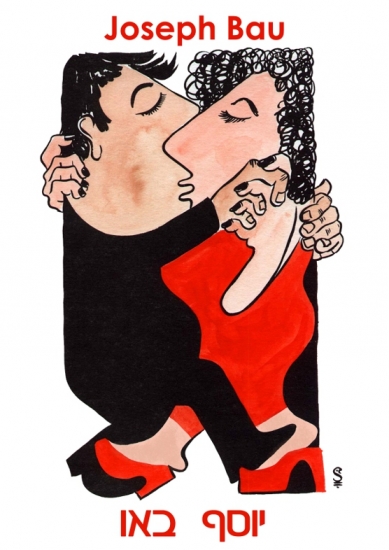
JOSEF BAU'S STUDIO WAS BURGLED - PRECIOUS HAND MADE CAMERAS FOR ANIMATED MOVIES WERE STOLEN AS WELL AS HIS ART WORKS. IT WOULD BE APPRECIATED IF ANYONE CAN HELP.
Anyone who has seen "Schindler's List" will remember the scene in which a young inmate of the Plaszow concentration camp meets a girl, falls in love and marries her in a secret ceremony in the women's barracks. What few know, though, is that although the girl, Rebecca Tennenbaum, was subsequently sent to Auschwitz, and the young man, Joseph Bau, worked for Oskar Schindler forging documents, they both survived the war and lived happily together for more than 50 years in Israel, in a life scarcely less eventful and amazing.
Joseph became an artist, movie maker, graphic designer and writer, with a great love for the Hebrew language and – as only became known after his death – an expert forger working for the Mossad, who prepared the false papers that enabled Eli Cohen to work in Syria. Bau was nominated for the Israel Prize in 1998 and died in 2002, three years after the death of his wife.
Today, his modest studio near the Habimah Theater in Tel Aviv has been preserved as a museum exactly as it was when he worked there. Visitors can see his animated films, his drawings, graphics and books, his homemade movie studio and developing equipment and the place where he painstakingly created his tools and his documents. Here, his daughters Hadasa and Clila tell his story to visitors and offer performances based on their parents' lives.
But what his daughters feel is most important about Joseph and Rebecca's lives is not their wartime experiences or their post-war achievements, but the fact that in spite of what they endured, both maintained a sense of humor and a lightness of spirit to the end of their days. Their optimism and resilience offer a testament to the human spirit, which can survive almost anything.
Joseph was a lover of jokes and his art is full of visual puns and wordplay. He even wrote an illustrated book of jokes in Hebrew (sample: One rooster says to another, "I saw your wife wandering around (מסתובבת) on Dizengoff Street – on a grill.") Every year, he sent out beautifully designed, humorous New Year's cards, such as a replica of a money note worth "1000 blessings" or a "happiness card" identical to an identity card.
"Some people draw a comparison to the humor in the film "Life is Beautiful," says Clila. "But it wasn't the same at all. He never made fun of the Nazis, but he loved to make fun of himself. Even in Plaszow camp he made funny playing cards to keep people's spirits up. Our mother was the same. She survived because her spirit couldn't be broken. In Israel she worked as a cosmetician and survivors would come to her for treatment and to tell their stories. One woman came every week for 30 years and told the same story about the death of her daughter. My mother would listen patiently like a psychologist, and then ask my sister and I to sing and tell jokes in order to send her home laughing – until the next time."
In his book "Dear God, Have You Ever Gone Hungry?" illustrated with his drawings and a replica of his mother's identity card, Bau tells his story which, typically, begins with a joke. In 1939 he and his mother went to the market in Krakow to buy some fruit. His mother tried to bargain with the seller, who reacted badly and called down a curse on "these terrible people."
A few weeks later, when the war broke out, Joseph asked his mother, with a laugh, "Well Mom, did it pay to bring about all this calamity for your five groschen?"
And indeed calamity did await the family, first in terrible conditions in the Krakow ghetto where Joseph survived as a graphic artist employed by the police because he knew how to write in Gothic letters, and then in Plaszow concentration camp, where his task was to produce blueprints for the Nazis. He also worked for Oskar Schindler and forged documents and identity papers for people who managed to escape from the camps.
Although his parents and brother were killed, Joseph achieved some measure of revenge. In 1991 he was called to testify at the trial in Austria of a particularly brutal SS man named Gruen who was accused of murdering and torturing thousands of victims,, including Bau's father. Bau himself paid a high price; the trial was so traumatic that he collapsed and was hospitalized in Vienna for a month, almost becoming Gruen's last victim.
Although the museum is housed in the original studio, Clila points out that the apartment is owned by someone else, and the family only rents it. So far, no help in preserving this historical property has been forthcoming from the municipality or any other source. "We have a dream," says Clila, "that someone will buy it and preserve this museum and its message – that life can be lived with humor, bravery and humanity."
Visits to the Joseph Bau Museum, 9 Berdichevsky Street, Tel Aviv, can be made by appointment, tel: 054 421 2730. Visits cost NIS 20 and performances NIS 50.
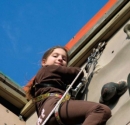 DEAR EDITOR 157 MAGAZINE
DEAR EDITOR 157 MAGAZINE COUNTING ON INFERENCE
COUNTING ON INFERENCE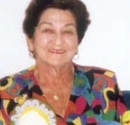 SHULAMIT LAMIE RAVINSKY 1925-2010
SHULAMIT LAMIE RAVINSKY 1925-2010 Art from the Heart
Art from the Heart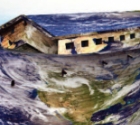 Jewish Art Returns to Jerusalem
Jewish Art Returns to Jerusalem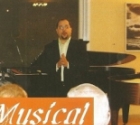 Musical Treats
Musical Treats Carol Novis
Carol Novis